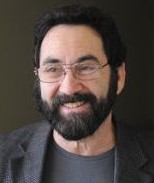IEEE CC Event 20 March - Planetary Defense using Hypervelocity Penetrators - Philip Lubin PhD UCSB Physics Deepspace
In-Person Location - Rusty’s Pizza 5934 Calle Real, Goleta, CA 93117
or Optional Virtual Webex Attendance
6:00 PM – Complimentary Pizza, Salad, Beverage
6:25 PM – Central Coast Status
6:30 PM – Dr. Philip Lubin Presents
Please join us on March 20th when Dr. Philip Lubin will speak about his study on directed energy propulsion for exploring other worlds as well as in protecting the Earth from asteroids and comets in his talk "Planetary Defense using Hypervelocity Penetrators". Guests are welcome. Please Register Yourself and Guests @ Register Now below. Note Attendance Type: In-Person or Virtual.
Best regards, Ruth Franklin IEEE Central Coast Chair
Date and Time
Location
Hosts
Registration
-
 Add Event to Calendar
Add Event to Calendar
Loading virtual attendance info...
- Rusty's Pizza
- 5934 Calle Real
- Goleta, California
- United States 93117
- Room Number: Event Room
Speakers
Philip Lubin of Physics Dept, UCSB
Planetary Defense using Hypervelocity Penetrators
We discuss a radically different approach to planetary defense. Our approach uses energy not momentum transfer, allowing for extremely short mitigation time scales. The method involves an array of small hypervelocity kinetic penetrators that pulverize and disassemble an asteroid or small comet. These penetrators can be passive, explosive filled or NED’s in extreme cases. For terminal mode (short warning time) this effectively mitigates the threat using the Earth’s atmosphere to dissipate the energy from the threat disassembled fragment cloud. This approach works in both terminal mode (short warning) as well as in extended time scale modes where there is a long warning time. In longer time intercept scenarios, the disassembled asteroid fragments cloud spreads and the fragments largely miss the Earth. A novel extremely high “beta” deflection mode is also a possibility. In short intercept time scenarios, the asteroid fragments of maximum ~10 meter diameter enter the Earth's atmosphere which acts as a "beam dump" where the fragments either burn up and/or air burst, with the primary channel of energy going into spatially and temporally decorrelated shock waves. This approach represents an extremely rapid response, testable, and deployable approach with a logical roadmap of development and testing. This allows for effective defense against asteroids in the 20-1000m diameter class. As an example, with only a 1m/s internal disruption, a 5 hours prior to impact intercept of a 50m diameter asteroid (~10Mt yield, similar to Tunguska), a 2 day prior to impact intercept of 100m diameter asteroid (~100Mt yield), or a 20 day prior to impact intercept of Apophis (~350m diameter, ~ 4 Gt yield) would mitigate these threats. Ideally we are never in this terminal mode scenario but our program allows for it. We will discuss the current status of our Phase II NIAC program and the results from our team which now includes members from academia, NASA centers, national labs and private space. We show that the current generation of launchers with positive C3 (Earth escape) are sufficient to provide mitigation for threats we have considered.
https://www.deepspace.ucsb.edu/projects/pi-terminal-planetary-defense
http://arxiv.org/abs/2110.07559, https://arxiv.org/abs/2201.10663
https://www.researchgate.net/profile/Philip_Lubi
Biography:
Education
University of California at Berkeley BA 1975 (Physics)
University of California at Berkeley BA 1975 (Mathematics)
Harvard University, Cambridge, 1975-76 (Physics)
University of California at Berkeley Ph.D. 1976-80 (Physics)
Website: www.deepspace.ucsb.edu
Philip Lubin is a professor of Physics at UC Santa Barbara whose primary research has been
focused on studies of the early universe in the millimeter wavelengths bands, applications of
directed energy for planetary defense and propulsion and multi-modal planetary defense using
hypervelocity penetrators. His group has designed, developed and fielded more than two dozen
ground based and balloon borne missions and helped develop two major cosmology satellites.
Among other accomplishments his group first detected the horizon scale fluctuations in the
Cosmic Microwave Background from both their South Pole and balloon borne systems in 1991
and their latest results, along with an international team of ESA and NASA researchers, are
from the Planck cosmology mission which have mapped in exquisite detail the structures of the
early universe. He is a co-I on the Planck mission. His group has worked on applications of
directed energy systems for a wide variety of applications including fast solar systems missions,
lunar applications and future large scale systems for planetary defense and systems to allow
small interstellar probes to achieve relativistic speeds. His group has worked on a variety of
planetary defense applications including recent hypervelocity penetrator mitigation using both
passive and active (explosive) penetrators. He is co-recipient of the 2006 Gruber Prize in
Cosmology along with the COBE science team for their groundbreaking work in cosmology as
well as the 2018 Gruber Prize in Cosmology along with the Planck science team for their
determination of fundamental cosmological parameter. He has published more than 500 papers.
Email:
Address:United States


